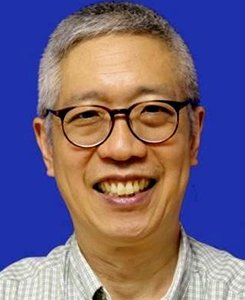
TAN TIANG WAH HUGH
Honorary Fellow
Contact Information:
Department of Biological Sciences
National University of Singapore
16 Science Drive 4
Singapore 117558
6516 2717
6779 2486
dbsttw@nus.edu.sg
Academics Qualifications
PhD NUS, BSc Hons Sing. BSc Sing.
Research Areas
Urban Agriculture, Tropical Horticulture, Urban Greenery and Ecology, Plant Systematics and Ecology, Conservation Biology
Current and Past Projects on Urban Agriculture
- Food production in Singapore
- Food self-sufficiency, urban farming and sustainability: how to make cities more self-sufficient in food production using Singapore as a case study
- Meeting Singapore’s dietary energy and nutritional requirements through local production of food crops
- How much food can Singapore grow?
- The urban edible landscape: Estimating the level of potential food self-sufficiency in Singapore
- How much food can the A-Go-Gro system produce for Singapore
- Feasibility of micro gardening in Singapore
- Food-productive urban landscapes of Singapore
- Feasibility of urban agriculture in Singapore
- How much food can be grown in an HDB apartment?
- Feasibility of an improved vertical farming system for HDB apartment blocks with minimal inputs
- Organic farming of vegetables in HDB residential apartments
- Recycling waste for food production
- Phase 1: Waste to Resource: Eco-Energy System towards Environmental Sustainability (production of biochar from waste and use for cultivation of vegetables)
- Phase 2: Waste to Resource: Eco-Energy System towards Environmental Sustainability (production of biochar from waste and use for cultivation of vegetables)
- A circular economy approach in phytoremediation: use of water hyacinth for production of biochar for the growth of vegetables
- From food waste to sustainable food production: NUS as a test bed for the nation
- Upcycling urban organic waste for cultivation of vegetables
- Conversion of digestate from anerobic digestion of food waste into fertilizers and the incorporation of biochar
- Feasibility of sustainable household organic urban faming in HDB apartment blocks of Singapore
- The feasibility of cultivating vegetables using the digestate of anaerobically digested food waste
- Use of black soldier fly larval frass as fertilizer for cultivating vegetables
- Evaluation of a proposed one-time feeding system for black soldier fly composting
- Integration of biochar into the black soldier fly food waste recycling process for sustainable animal feed and organic fertilizer
|
|
- Edible green roofs
- Sustainable food crop extensive green roofs
- Feasibility of low-maintenance, edible green roofs as food reserves for cities
- Towards greater heights for greenery and food: establishing a minimally maintained edible green roof in Singapore
- Feasibility of rooftop aquaponics on Singapore rooftops
- Food crop selection
- Companion planting for Singapore food crops
- Protective companion planting in an urban setting
- Trialing the Three Sisters Cultivation Method on Singapore roofs
- Selection of food crops for food crises
- Cultivation of kang kong (Ipomoea aquatica) under urban farming conditions
- Towards a database for species selection for horticulture and landscaping
- Effects of climate change
- How will the world’s food plants respond to climate change?
- Can temperate food crops grow in the tropics?
- Farming at sea
- A preliminary assessment on the feasibility of novel sea-farming ideas in Singapore
- Using sea space for farming: a feasibility study
-
Productive façade systems: Implementation and evaluation of building integrated photovoltaic panels and vertical farming at the Tropical Technology Laboratory
-
Nutraceuticals: Growth assessment and glucosinolate profiling of cai xin (Brassica rapa parachinensis)
-
Light environment for food crop cultivation: Towards and edible garden city: Assessment of photosynthetically active radiation for growing vegetables in the high-rise, high-density residential environment of Singapore
-
Community gardening: Community gardens in Singapore and Sweden
-
Pests of food crops: Whiteflies and their biological control
Selected Publications
-
Shen, Y., Song, S., Thian, B. W. Y., Fong, S. L., Ee, A. W. L., Arora, S., Ghosh, S., Li, S. F. Y., Tan, H. W. W., Dai, Y. & Wang, C. H., 2020. Impacts of biochar concentration on the growth performance of a leafy vegetable in a tropical city and its global warming potential. Journal of Cleaner Production, 264: 121678.
-
Song, S., Arora, S., Laserna, A. K. C., Shen, Y., Thian, B. W. Y., Cheong, J. C., Tan, J. K. N., Chiam, Z., Fong, S. L., Ghosh, S., Ok, Y. S., Li, S. F. Y., Tan, H. T. W., Dai, Y. & Wang, C. H., 2020. Biochar for urban agriculture: Impacts on soil chemical characteristics and on Brassica rapa growth, nutrient content and metabolism over multiple growth cycles. Science of the Total Environment, 727: 138742.
-
Heery, E. C., Lian, K. Y., Loke, L. H. L., Tan, H. T. W. & Todd, P. A., 2020. Evaluating seaweed farming as an eco-engineering strategy for ‘blue’ shoreline infrastructure. Ecological Engineering, 152: 105857.
-
Cheong, J. C., Lee, J. T. E., Lim, J. W., Song, S., Tan, J. K. N., Chiam, Z. Y., Yap, K. Y., Lim, E. Y., Zhang, J., Tan, H. T. W. & Tong, Y. W., 2020. Closing the food waste loop: Food waste anaerobic digestate as fertilizer for the cultivation of the leafy vegetable, xiao bai cai (Brassica rapa). Science of the Total Environment, 715: 136789.
-
Tan, W. K., Goenadie, V., Lee, H. W., Liang, X., Loh, C. S., Ong, C. N. & Tan, H. T. W., 2020. Growth and glycosinolate profiles of a common Asian green leafy vegetable, Brassica rapa chinensis var. parachinensis (choy sum), under LED lighting. Scientia Horticulturae, 261: 108922.
-
Kosoric, V., Huang, H., Tablada, A., Lau, S.-K. & Tan, H. T. W., 2019. Survey on the social acceptance of the productive façade concept integrating photovoltaic and farming systems in high-rise public housing blocks in Singapore. Renewable and Sustainable Energy Reviews, 111: 197-214.
-
Song, X. P., Tan, H. T. W. & P. Y. Tan, 2018. Assessment of light adequacy for vertical farming in a tropical city. Urban Forestry & Urban Greening, 29: 49-57.
-
Lam, W. N., R. J. Y. Lim, S. H. Wong & H. T. W. Tan, 2018. Predatory dipteran larva contributes to nutrient sequestration in a carnivorous pitcher plant. Biology Letters, 14: 20170716.
-
Lam, W. N., W. Y. Wang, L. F. Cheong, J. K. H. Koh, M. Foo, K. Y. Chong & H. T. W. Tan, 2018. Pitcher plant facilitates prey capture in a sympatric congener. Plant Ecology, 219: 299-311.
-
Tan, M. K., C.-c. Chang & H. T. W. Tan, 2018. Shy herbivores forage more efficiently than bold ones regardless of information-processing overload. Behavioural Processes, 149: 52-58.
-
Chong, K. Y., M. B. Raphael, L. R. Carrasco, A. T. K. Yee, X. Giam, V. B. Yap & H. T. W. Tan, 2017. Reconstructing the invasion history of a spreading, non-native, tropical tree through a snapshot of current distribution, sizes, and growth rates. Plant Ecology, 218: 673-685.
-
Choo, Y. R., A. T. Yan, R. H. J. Loh, Z. Y. Chin, C. S. Jo, K. E. M. Lee, M. K. Tan & H. T. W. Tan, 2017. Can waste vegetables and weeds be used to farm crickets and grasshoppers in Singapore? UTAR Agriculture Science, 3: 18-22.
-
Harrison, R. D., K. Y. Chong, N. M. Pham, A. T. K. Yee, C. K. Yeo, H. T. W. Tan & J.-Y. Rasplus, 2017. Pollination of Ficus elastica: India rubber re-establishes sexual reproduction in Singapore. Scientific Reports, 7: 11616.
-
Lam, W. N., K. Y. Chong, G. S. Anand & H. T. W. Tan, 2017. Dipteran larvae and microbes facilitate nutrient sequestration in the Nepenthes gracilis pitcher plant host. Biology Letters, 13(3): 20160928.
-
Song, X. P., H. T. W. Tan & P. Y. Tan, 2017. Assessment of light adequacy for vertical farming in a tropical city. Urban Forestry & Urban Greening, 29: 49-57.
-
Soliman, T., A. MacLeod, J. D. Mumford, T. P. L. Nghiem, H. T. W. Tan, S. K. Papworth, R. T. Corlett & L. R. Carrasco, 2016. A regional decision support scheme for pest risk analysis in Southeast Asia. Risk Analysis, 36(5): 904-913.
-
Yang, Z., S. K. Koh, W. C. Ng, R. C. J. Lim, H. T. W. Tan, Y. W. Tong, Y. Dai, C. Chong & C.-H. Wang, 2016. Potential application of gasification to recycle food waste and rehabilitate acidic soil from secondary forests on degraded land in Southeast Asia. Journal of Environmental Management, 172: 40-48.
-
Yee, A. T. K., K. Y. Chong, L. Neo & H. T. W. Tan, 2016. Updating the classification system for the secondary forests of Singapore. Raffles Bulletin of Zoology, Supplement No. 32: 11-21.
-
Giam, X., L. Mani, L. P. Koh & H. T. W. Tan, 2015. Saving tropical forests by knowing what we consume. Conservation Letters, 9(4): 267-274.
-
Nghiem, L. T. P., H. T. W. Tan & R. T. Corlett, 2015. Invasive trees in Singapore: are they a threat to native forests? Tropical Conservation Science, 18: 201-214.
-
Chong, K. Y., S. Teo, B. Kurukulasuriya, Y. F. Chung, S. Rajathurai & H. T. W. Tan, 2014. Not all green is as good: Different effects of the natural and cultivated components of urban vegetation on bird and butterfly diversity. Biological Conservation, 171: 299-309.
-
Yeo, H. H. T., K. Y. Chong, A. T. K. Yee, X. Giam, R. T. Corlett & H. T. W. Tan, 2014. Leaf litter depth as an important factor inhibiting seedling establishment of an exotic palm in tropical secondary forest patches. Biological Invasions, 16: 381-392.
-
Wee, A. K. S., K. Takayama, T. Asakawa, B. Thompson, Onrizal, S. Sungkaew, X. T. Nguyen, M. Nazre, K. K. Soe, H. T. W. Tan, Y. Watano, S. Baba, T. Kajita & E. L. Webb, 2014. Oceanic currents, not land masses, maintain the genetic structure of the mangrove Rhizophora mucronata Lam. (Rhizophoraceae) in Southeast Asia. Journal of Biogeography, 41: 954-964.
-
Nghiem, L. T. P., T. Soliman, D. C. J. Yeo, H. T. W. Tan, T. A. Evans, J. D. Mumford, R. P. Keller, R. H. A. Baker, R. T. Corlett & L. R. Carrasco, 2013. Economic and environmental impacts of harmful non-indigenous species in Southeast Asia. PLoS ONE, 8, article number e71255.
-
Chong, K. Y., S. Teo, B. Kurukulasuriya, Y. F. Chung, S. Rajathurai, H. C. Lim & H. T. W. Tan, 2012. Decadal changes in urban bird abundance in Singapore. The Raffles Bulletin of Zoology, Supplement 25: 189-196.
-
Giam, X., L. P. Koh, H. H. Tan, J. Miettinen, H. T. W. Tan & P. K. L. Ng, 2012. Global extinctions of freshwater fishes follow peatland conversion in Sundaland. Frontiers in Ecology and the Environment, 10: 465-470.
-
Chong, K. Y., S. M. L. Lee, A. T. Gwee, P. K. F. Leong, S. Ahmad, W. F. Ang, A. F. S. L. Lok, C. K. Yeo, R. T. Corlett & H. T. W. Tan, 2012. Herbarium records do not predict rediscovery of presumed nationally extinct species. Biodiversity and Conservation, 21: 2589-2599.
-
Giam, X., N. S. Sodhi, B. W. Brook, H. T. W. Tan & C. J. A. Bradshaw, 2011. Relative need for conservation assessments of vascular plant species among ecoregions. Journal of Biogeography, 38: 55-68.
-
Lee, M. Y. E. & Tan, H. T. W., 2011. Growing your own food: the need for urban agriculture in Singapore. Innovation Magazine, 10: 40-42.
-
Ng, P.K.L., R.T. Corlett and H.T.W. Tan (eds.), 2011. Singapore Biodiversity: An Encyclopaedia of the Natural Environment and Sustainable Development. Editions Didier Millet in association with the Raffles Museum of Biodiversity Research, National University of Singapore, Singapore. 552 pp.
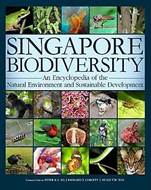
-
Chong, K. Y., R. T. Corlett, D. C. J. Yeo & H. T. W. Tan, 2010. Towards a global database of weed risk assessments: A test of transferability for the tropics. Biological Invasions, 13: 1571-1577.
-
Giam, X., C. J. A. Bradshaw, H. T. W. Tan & N. S. Sodhi, 2010. Future habitat loss and the conservation of plant biodiversity. Biological Conservation, 143: 1594-1602.
-
Giam, X., T. H. Ng, V. B. Yap & H. T. W. Tan, 2010. The extent of undiscovered species in Southeast Asia. Biodiversity and Conservation, 19: 943-954.
-
Tan, H.T.W., L.M. Chou, D.C.J. Yeo and P.K.L. Ng. 2010. The Natural Heritage of Singapore. 3rd Edition. Prentice Hall/Pearson South Asia Pte Ltd, Singapore. 323 pp.
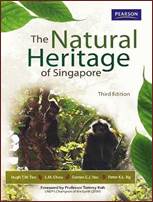
-
Chong, K. Y., H. T. W. Tan & R. T. Corlett, 2009. A Checklist of the Total Vascular Plant Flora of Singapore: Native, Naturalised and Cultivated Species. Raffles Museum of Biodiversity Research, National University of Singapore, Singapore. 273 pp. Uploaded 12 Nov.2009. [PDF, 1.03 MB]
-
Shi, A. Z., L. P. Koh & H. T. W. Tan. 2009. The biofuel potential of municipal solid waste. GCB Bioenergy, 1: 317-320.
-
Bradshaw, C. J. A., X. Giam, H. T. W. Tan, B. W. Brook & N. S. Sodhi. 2008. Threat or invasive status in legumes is related to opposite extremes of the same ecological and life-history attributes. Journal of Ecology, 96: 869-883.
-
Sodhi, N. S., L. P. Koh, S.-H. Peh, H. T. W. Tan, R. L. Chazdon, R. T. Corlett, T. M. Lee, R. K. Colwell, B. W. Brook, C. H. Sekercioglu & C. J. A. Bradshaw. 2008. Correlates of extinction proneness in tropical angiosperms. Diversity and Distributions, 14: 1-10.
-
Koh, L.P., H.T.W. Tan and N.S. Sodhi. 2008. Biofuels: Waste not, want not. Science, 320: 1419.
-
Tan, H. T. W., B. C. Tan, K.-x., Tan, Ali bin Ibrahim, P. T. Chew, K. S. Chua, H. Duistermaat, S. K. Ganesan, M. W. K. Goh, A. T. Gwee, R. Kiew, S. M. L. Lee, P. Leong, J. Lim, A. F. S. L. Lok, A. H. B. Loo, S. K. Y. Lum, T. Morgany, Saifuddin bin Suran, S. Sim, Haji Samsuri bin Haji Ahmad, Y. C. Wee, K. F. Yap, C. K. Yeo & J. W. H. Yong. 2008. Checklists of threatened species: Seed plants. In: Davison, G. W. H., P. K. L. Ng & H. C. Ho (eds.), The Singapore Red Data Book: Threatened Plants and Animals of Singapore. 2nd Edition. Nature Society (Singapore), Singapore. Pp. 213-244.
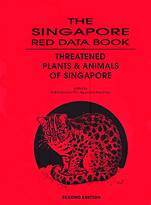
-
Pandit, M. K., H. T. W. Tan & M. S. Bishi. 2006. Polyploidy in invasive plant species of Singapore. Botanical Journal of the Linnean Society, 151: 395-403.
-
Tan, H.T.W. 2006. Nature Reserve Parks, Gardens and Streetscapes: Today Singapore, Tomorrow the World. 10 pp.
-
Teo, D. H. L., H. T. W. Tan, R. T. Corlett, C. M. Wong & S. K. Y. Lum, 2003. Continental rain forest fragments in Singapore resist invasion by exotic plants. Journal of Biogeography, 30: 305-310.
-
Koh, L. P., N. S. Sodhi, H. T. W. Tan & K. S.-H. Peh, 2002. Factors affecting the distribution of vascular plants, springtails, butterflies and birds on small tropical islands. Journal of Biogeography, 29: 93-108.
-
Keng, H., S. C. Chin & H. T. W. Tan, 1998. A Concise Flora of Singapore. Volume II: Monocotyledons. Singapore University Press, Singapore. 215 pp. Available at NUS Publishing.
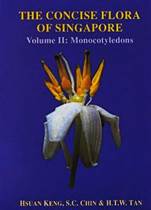
-
Turner, I.M., K.S. Chua, J.S.Y. Ong, B.C. Soong and H.T.W. Tan., 1996. A century of plant species loss from an isolated fragment of lowland tropical rain forest. Conservation Biology, 10: 1229-1244.
-
Tan, H. T. W. (ed.), 1995. A Guide to the Threatened Plants of Singapore. Singapore Science Centre, Singapore. 158 pp.
Turner, I. M., H. T. W. Tan, Y. C. Wee, Ali Ibrahim, P. T. Chew & R. T. Corlett, 1994. A study of plant species extinction in Singapore: lessons for the conservation of tropical biodiversity. Conservation Biology, 8: 705-712.
Hugh Tan’s 168 Selected Publications on Singapore Biodiversity ![]()
